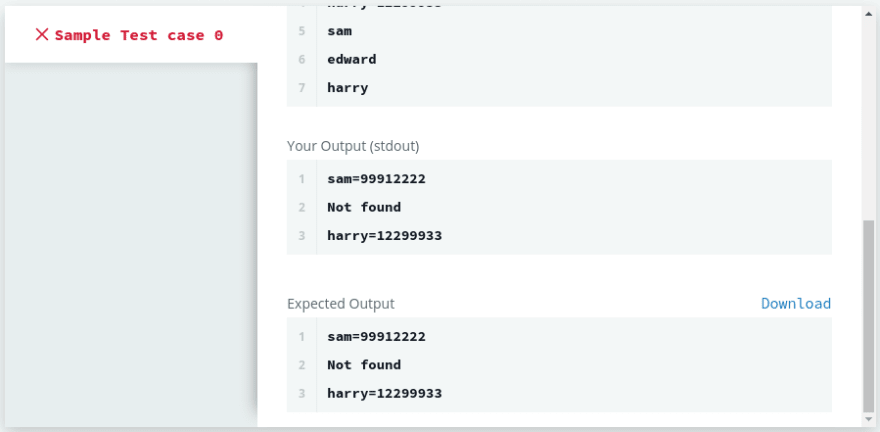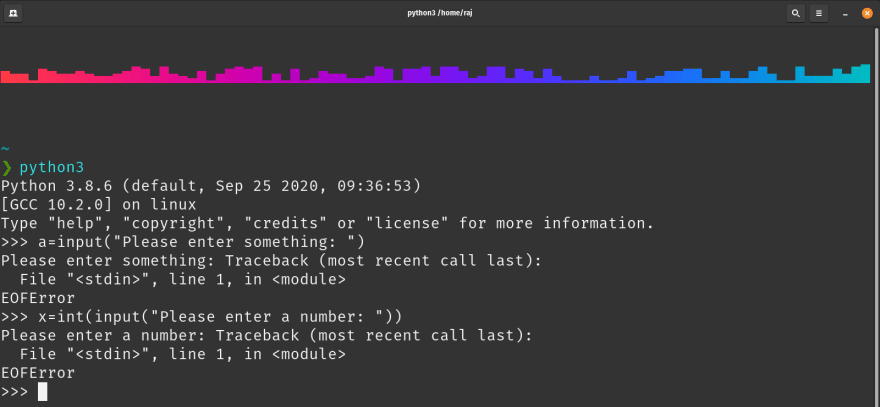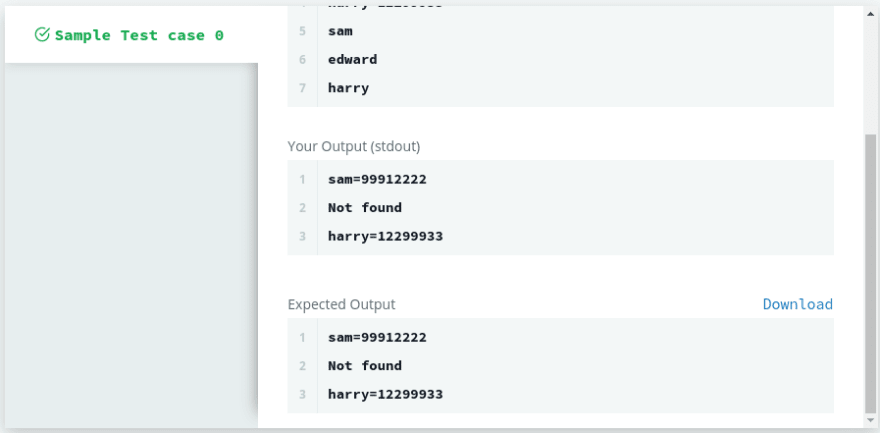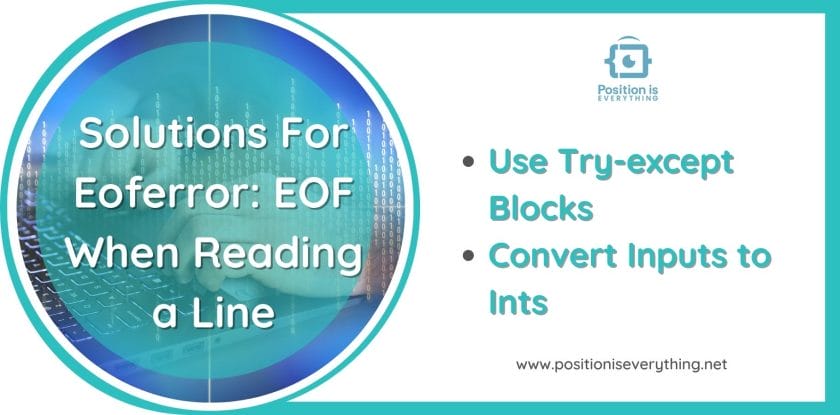width, height = map(int, input().split())
def rectanglePerimeter(width, height):
return ((width + height)*2)
print(rectanglePerimeter(width, height))
Running it like this produces:
% echo "1 2" | test.py
6
I suspect IDLE is simply passing a single string to your script. The first input() is slurping the entire string. Notice what happens if you put some print statements in after the calls to input():
width = input()
print(width)
height = input()
print(height)
Running echo "1 2" | test.py produces
1 2
Traceback (most recent call last):
File "/home/unutbu/pybin/test.py", line 5, in <module>
height = input()
EOFError: EOF when reading a line
Notice the first print statement prints the entire string '1 2'. The second call to input() raises the EOFError (end-of-file error).
So a simple pipe such as the one I used only allows you to pass one string. Thus you can only call input() once. You must then process this string, split it on whitespace, and convert the string fragments to ints yourself. That is what
width, height = map(int, input().split())
does.
Note, there are other ways to pass input to your program. If you had run test.py in a terminal, then you could have typed 1 and 2 separately with no problem. Or, you could have written a program with pexpect to simulate a terminal, passing 1 and 2 programmatically. Or, you could use argparse to pass arguments on the command line, allowing you to call your program with
test.py 1 2

So as we can see in the pictures above, despite having produced the expected output, our test case fails due to a runtime error EOFError i.e., End of File Error. Let’s understand what is EOF and how to tackle it.
What is EOFError
In Python, an EOFError is an exception that gets raised when functions such as input() or raw_input() in case of python2 return end-of-file (EOF) without reading any input.
When can we expect EOFError
We can expect EOF in few cases which have to deal with input() / raw_input() such as:
-
Interrupt code in execution using
ctrl+dwhen an input statement is being executed as shown below
-
Another possible case to encounter EOF is, when we want to take some number of inputs from user i.e., we do not know the exact number of inputs; hence we run an infinite loop for accepting inputs as below, and get a Traceback Error at the very last iteration of our infinite loop because user does not give any input at that iteration
n=int(input())
if(n>=1 and n<=10**5):
phone_book={}
for i in range(n):
feed=input()
phone_book[feed.split()[0]]=feed.split()[1]
while True:
name=input()
if name in phone_book.keys():
print(name,end="")
print("=",end="")
print(phone_book[name])
else:
print("Not found")
Enter fullscreen mode
Exit fullscreen mode
The code above gives EOFError because the input statement inside while loop raises an exception at last iteration
Do not worry if you don’t understand the code or don’t get context of the code, its just a solution of one of the problem statements on HackerRank 30 days of code challenge which you might want to check
The important part here is, that I used an infinite while loop to accept input which gave me a runtime error.
How to tackle EOFError
We can catch EOFError as any other error, by using try-except blocks as shown below :
try:
input("Please enter something")
except:
print("EOF")
Enter fullscreen mode
Exit fullscreen mode
You might want to do something else instead of just printing «EOF» on the console such as:
n=int(input())
if(n>=1 and n<=10**5):
phone_book={}
for i in range(n):
feed=input()
phone_book[feed.split()[0]]=feed.split()[1]
while True:
try:
name=input()
except EOFError:
break
if name in phone_book.keys():
print(name,end="")
print("=",end="")
print(phone_book[name])
else:
print("Not found")
Enter fullscreen mode
Exit fullscreen mode
In the code above, python exits out of the loop if it encounters EOFError and we pass our test case, the problem due to which this discussion began…
Hope this is helpful
If you know any other cases where we can expect EOFError, you might consider commenting them below.
Improve Article
Save Article
Like Article
Improve Article
Save Article
Like Article
EOFError is raised when one of the built-in functions input() or raw_input() hits an end-of-file condition (EOF) without reading any data. This error is sometimes experienced while using online IDEs. This occurs when we have asked the user for input but have not provided any input in the input box. We can overcome this issue by using try and except keywords in Python. This is called as Exception Handling.
Example: This code will generate an EOFError when there is no input given to the online IDE.
Python3
n = int(input())
print(n * 10)
Output:
This exception can be handled as:
Python3
try:
n = int(input())
print(n * 10)
except EOFError as e:
print(e)
Output:
EOF when reading a line
Last Updated :
02 Sep, 2020
Like Article
Save Article
Eoferror: EOF when reading a line occurs when raw_input() or one of the built-in function’s input () hits an end-of-file condition without the program reading any data. It occurs when the user has asked for input but has no input in the input box.
This exception can be handled as:
Python3
try:
n = int(input())
print(n * 10)
except EOFError as e:
print(e)
Output:
EOF when reading a line
Last Updated :
02 Sep, 2020
Like Article
Save Article
Eoferror: EOF when reading a line occurs when raw_input() or one of the built-in function’s input () hits an end-of-file condition without the program reading any data. It occurs when the user has asked for input but has no input in the input box.
This article explains everything in detail, so keep reading for more information!
Contents
- Why Does Eoferror: EOF When Reading a Line Error Occur?
- – Hits an EOF Without Reading Any Data
- – IDLE Passing a Single String to the Script
- – Syntax Error
- – The Input Number Chosen Is Wrong
- How To Resolve Eoferror: EOF When Reading a Line Error Message?
- – Use Try-except Blocks
- – Convert Inputs to Ints
- – Use the Correct Command
- – Use Correct Syntax
- FAQs
- 1. How To Fix the EOF Error in the Program?
- 2. How Do You Fix Eoferror: EOF When Reading a Line?
- Conclusion
- Reference
Why Does Eoferror: EOF When Reading a Line Error Occur?
The eoferror: EOF when reading a line error message occurs for multiple reasons, such as: syntax error, no input, or infinite “while” loop. However, there are many other reasons that cause this error message to occur such as hitting an EOF without reading any data.
Some common mistakes of the developers that can lead to this error include:
- IDLE passing a single string to the script
- Syntax error
- The input number chosen is wrong
– Hits an EOF Without Reading Any Data
An eoferror is raised when built-in functions input() or raw_input() hits an EOF, also known as the end-of-file condition. Usually, this happens when the function hits EOF without reading any data.
Sometimes, the programmer experiences this error while using online IDEs. This error occurs when the programmer has asked the user for input but has not provided any input in the program’s input box.
Such a type of error is called Exception Handling. Let’s see the example below, which will generate an EOFError when no input is given to the online IDE.
Program Example:
print(n * 10)
– IDLE Passing a Single String to the Script
Another reason why this error occurs is that the programmer has written the program in such a way that the IDLE has passed a single string to their script. When a single string is passed to the script, an error occurs.
The first input() is responsible for slurping the entire string in the following example. Notice the program when the programmer puts some print statements in it after the calls to input().
Program Example:
print(width)
height = input()
print(height)
Output:
Running (echo “1 2” | test.py) command produces an output of “1 2”
Trackback of the program:
File “/home/unutbu/pybin/test.py”, line 6, in <module>
height = input()
EOFError: EOF When Reading a Line
Explanation:
See how the first print statement prints the output of the entire string “1 2”, whereas the second call to input() or second print raises an error message to occur. This is because the programmer has used a simple pipe which allows them to pass only one string. Therefore, the programmer can only call the input() function once.
– Syntax Error
The program can show an EOF error message when the programmer tries to print or read a line in the program and has used the wrong syntax. Moreover, various types of EOF errors can occur simply because of minor syntax errors.
Syntax errors can be in a function or a command given to the program. Additionally, minor spelling mistakes are also considered syntax errors.
Some of the common syntax errors that occur when the programmer tries to read a line are listed below:
- Eoferror: EOF when reading a line java
- Eoferror: EOF when reading a line hackerrank
- Eoferror: EOF when reading a line python input
- Int(input()) eoferror EOF when reading a line
- Docker eoferror: EOF when reading a line
- Eoferror: EOF when reading a line zybooks
– The Input Number Chosen Is Wrong
Another possible reason why the programmers get a notification of an EOF error is when they want to take several inputs from a user but do not know the exact number of inputs.
If this is the case, then what is happening here is that the programmer has run an infinite loop for accepting inputs. In return, they get a trackback error at the very last iteration of the infinite loop. This is because the user did not give any input at the iteration.
To understand this concept more, let’s see an example given below.
For example:
if(o>=2 and 0<=11**6):
phone_book={}
for b in range(o):
feed=input()
phone_book[feed.split()[1]]=feed.split()[2]
while True:
name=input()
if name in phone_book.keys():
print(name,end=””)
print(“=”,end=””)
print(phone_book[name])
else:
print(“Not found”)
Explanation:
After executing this program, the programmer will get an EOFError because the input statement inside the “while” loop has raised an exception at the last iteration. The program will give the programmer a runtime error.
How To Resolve Eoferror: EOF When Reading a Line Error Message?
You can resolve Eoferror: EOF when reading a line error message using multiple possible solutions, such as: using the “try/except” function, correcting the syntax errors or using the correct commands. Before opting for any of the methods, ensure that your code has correct syntax.
Some other solutions are listed below and explained in detail:
– Use Try-except Blocks
In order to resolve the eoferror, the programmer should first try to use the “try-except” block in their program. The program will get an option to give the output without any error at the execution time. Let’s see the example below:
For example:
width = input()
height = input()
def rectanglePerimeter(height, width):
return ((height + width)*2)
print(rectanglePerimeter(height, width))
except EOFError as e:
print(end=””)
– Convert Inputs to Ints
Try to convert the input() functions to ints. This will help remove the error message as the input could be an integer, and without the “int” function, the program will not execute but instead show an error message.
The syntax used to convert the input to ints is:
height = int(input())
For example:
width = int(input())
height = int(input())
def rectanglePerimeter(height, width):
return ((height + width)*2)
print(rectanglePerimeter(height, width))
except EOFError as e:
print(end=””)
– Use the Correct Command
Sometimes the programmer accidentally uses a wrong command, and that causes issues in the program due to which an eoferror error occurs. This is because the command was unable to read the program line. Let’s check the below example to understand how the programmer has used the “break” function to avoid the EOF error.
For example:
if(p>=2 and p<=11**6):
phone_book={}
for c in range(p):
feed=input()
phone_book[feed.split()[0]]=feed.split()[1]
while True:
Try:
name=input()
except EOFError:
break
if name in phone_book.keys():
print(name,end=””)
print(“=”,end=””)
print(phone_book[name])
else:
print(“Not found”)
– Use Correct Syntax
A syntax error occurs when a command or function is wrong or used incorrectly. Due to EOF syntax errors, the program cannot execute its functions properly while trying to read a program line.
FAQs
1. How To Fix the EOF Error in the Program?
You can fix the EOF error in the program by using the “pass” keyword in the “except” block. The best way to avoid an EOF error message while coding in python or any platform is to catch the exception and pass it using the keyword “pass” in the “except” block.
2. How Do You Fix Eoferror: EOF When Reading a Line?
To fix the eoferror: EOF error when reading a line, you have to use the try() and except() functions in python. Moreover, the questions “how to fix eoferror: EOF when reading a line” and “how do you fix eoferror: EOF when reading a line” are the same with identical solutions.
Conclusion
In this article, we tried to share everything you need to know about the eoferror: EOF when reading a line_. We began with some of the major reasons behind this error and shared various quick yet effective and easy-to-follow methods to fix the error.
Let’s look at some of the key takeaways discussed above for better focus:
- This error can be experienced while using online IDEs.
- A code can generate an EOFError when no input exists in the online IDE.
- Note that the input() returns a string and not an int. Thus, the calculation will fail.
The reader can now resolve their program’s error and work on it smoothly while using this guide as a guide.
Reference
- https://stackoverflow.com/questions/17675925/eoferror-eof-when-reading-a-line
- https://www.geeksforgeeks.org/handling-eoferror-exception-in-python/#:~:text=EOFError%20is%20raised%20when%20one,input%20in%20the%20input%20box.
- https://dev.to/rajpansuriya/eoferror-eof-when-reading-a-line-12fe
- Author
- Recent Posts
Your Go-To Resource for Learn & Build: CSS,JavaScript,HTML,PHP,C++ and MYSQL. Meet The Team










